 Your new post is loading...
 Your new post is loading...
Vivo has started teasing its next flagship phone, the X50. A video posted to Weibo shows off the camera module, which includes a periscope telephoto, two normal-looking lenses, and one much larger module that is presumably for the primary camera. The lens rotates as the module is manipulated by a robotic gimbal, suggesting the key feature here is image stabilization. One of the big inclusions in Vivo’s Apex 2020 concept phone, which we weren’t able to see in person due to the COVID-19 pandemic, was “gimbal-like” stabilization on a 48-megapixel camera. Vivo said the design was inspired by chameleons’ eyes and is 200 percent more effective than typical OIS, allowing for longer nighttime exposures and smoother video. It looks like the X50 will be the first commercial deployment of this idea; another teaser videotouts the camera’s low-light ability.
Samsung's folding display device, possibly called the Galaxy Fold, will cost $1.8k before carrier subsidies, according to analysts at CCS-CIMB Research; the gadget reportedly will contain a battery pack in each side for a total 5,000 to 6,000 mAh; will run the Exynos 9820 CPU in Korea and the Snapdragon 8150 in the US; CCS-CIMB indicates suppliers have confirmed the 74 pages report.
Based on IDC data charted for us by BI Intelligence, Samsung’s market share is getting eaten not only by Apple, representing the high-end smartphone market, but most notably from low-end phone makers in China including Lenovo, Huawei, and Xiaomi, which has come out of nowhere to become the biggest smartphone maker in China and the third-biggest in the world.
"Made in USA" Smartphone OS share surges from 5% to 97% in 8 years
This morning, former analyst and venture capitalist Mary Meeker releases her in-depth look at the state of the web at Re/code’s CodeCon conference. The Kleiner Perkins Caufield & Byers partner also hints at up-and-coming startups and uncovers digital trends with an array of surprising stats.
ULTRAMOBILE YEAR AHEAD: Gartner has updated its annual device forecasts for PCs, tablets, and mobile phones for the new year. On the whole, the research outfit thinks sales of all of these devices combined will grow by just over 7% in 2014, which would be a re-acceleration in growth compared to the 4% growth achieved between 2012 and 2013. Mobile phones, both feature phones and smartphones, will dominate in terms of sales volume, with expected annual sales of almost 1.9 billion. But it will be the "ultramobiles" category, in which Gartner includes tablets, hybrids, and flip-form devices, that will set the pace for growth, with increased sales of nearly 54% during the year. We feel this is a function of growing demand for "phablets," or devices that carry a screen size somewhere between the standard 5-inch smartphone and the 8-inch tablet. Phablet shipments have already skyrocketed in key markets for mobile growth like China and India. PC sales, meanwhile, will continue to be hampered by the mobile movement. Gartner thinks PC sales will decline 7% in 2014. ONE BILLION ANDROID DEVICES! If 2013 was the watershed year for Android in terms of market share, then 2014 will be the year Android solidifies its stronghold on the global mobile market. Gartner estimates Android will sell 1.1 billion devices for the year. They also confirm that Android blows past Apple in terms of installed base, with 1.9 billion active Android devices already in use. With slowing growth in mobile uptake in developed markets, expect Android to make massive waves with new, lower-income users in emerging mobile markets, where most new customers are priced out of the premium device market dominated by Apple. (Gartner)
Here's a pretty neat chart from comScore, via...
The evolution of the non-smart phone market. Who will be around in 3 years to still make them?
Eesha Khare is the mind behind a super-powerful and tiny gizmo that packs more energy into a small space, delivers a charge more quickly, and holds that charge longer than the typical battery. Khare showed off her so-called super-capacitor last week at the Intel International Science and Engineering Fair in Phoenix, Ariz. In her demonstration, she showed it powering a light-emitting diode, or LED light, but the itty-bitty device could fit inside cell phone batteries, delivering a full charge in 20-30 seconds. It takes several hours for the average cell phone to fully charge. Khare also pointed out that the super-capacitor “can last for 10,000 charge cycles compared to batteries which are good for only 1,000 cycles.”
The Contactless Mobile Report 2013 #MWC13 Next Mobile Connectivity NFC, QR, Bluetooth, WiFi, ... Barcelona 25-28 February 2013 24-27 February 2014
MarketWatch estimates that all of those old phones sitting around are worth $34 billion. (That's allphones, not just smartphones.)
BlackBerry was up 15% on Feb 4th after it got a ringing endorsement from Bernstein Research. Bernstein slapped a $22 price target on the stock based mostly on the notion that investors don't fully appreciate how big the BlackBerry 10 launch will be. The 15% jump is the just the latest in a series of big days for BlackBerry which was trading close to $6 at its lowest point recently. But before people get too excited about Bernstein's note, or BlackBerry in general, take a look at this chart of Palm when it tried to resurrect its fortunes.
How do you improve the mobile experience when all you have is a visibility over a carrier’s network? That is the question that started carrier IQ (CiQ) in 2005. They set out to open up a window on the devices. To show what was happening inside what was until then a closed ‘black box’ after it left the factory. Seven years later, the company now has a tremendous technology foundation, from a unique agent software which gathers system data on smartphones (180 million rolled out so far), to an incredible analytics big data platform that’s able to deliver real-time drill-down information on technical parameters of a phone as well as trends and statistics. Last ime I checked CiQ was processing over 7 terabytes of smartphone system data each month… They have a great business team, too, and managed to develop solid relationships with major mobile carriers in the US and abroad. And weathered an incredible storm in late 2011 — more on this at the bottom of this post.
We've known for a while that Samsung is readying phones with flexible screens. Now, though, the Wall Street Journal is reporting that it's pushing forward with the concept more quickly than ever, in order to avoid being beaten to the finish line by other firms.
The new phones simply swap plastic for glass in the screen. The OLEDs you find in plenty of other displays can be put on flexible materials—like metal foil—which then makes it possible to create a device which is both unbreakable and bendable.
Samsung hasn't told the Journal how much it's invested in the new bendy phones. However, it points out that it has been spurred along by growing innovation in the display market, from the likes of LG and Sharp. Seems that's enough to rush out a bendy phone as soon as possible.
Which is just what it plans to do. The Journal reports that a "person familiar with the situation" told it that devices will be released in the first half of 2013. Bendy phones for all!
|
Just hours after Oppo revealed the world’s first under-display camera, Xiaomi has hit back with its own take on the new technology. Xiaomi president Lin Bin has posted a video to Weibo (later re-posted to Twitter) of the Xiaomi Mi 9 with a front facing camera concealed entirely behind the phone’s screen. That means the new version of the handset has no need for any notches, hole-punches, or even pop-up selfie cameras alongside its OLED display. It’s not entirely clear how Xiaomi’s new technology works. The Phone Talks notes that Xiaomi recently filed for a patent that appears to cover similar functionality, which uses two alternately-driven display portions to allow light to pass through to the camera sensor.
In the past 40 years our personal computers have, of course, become immensely more powerful and convenient, but the roots of our interest in personal computing haven’t changed. And, against many odds Apple, has become a giant, world-spanning, immensely rich company. In retrospect, we can see three Apple eras. Apple 1.0 was a turbulent period: The rise of the Apple ][, its loss to the IBM PC and Microsoft; the hope and trouble with the Macintosh; Jobs forced out followed by a succession of “professional” CEOs and progressively deteriorating finances. In retrospect, Jobs’ departure from Apple was one of the best things that happened to him and the company he co-founded. If hadn’t left for an outside tour, the Pixar success and the NeXT technical achievements and business challenges, he wouldn’t have been able to return and jump start the company’s next phase. Apple 2.0 began in late 1996 when Jobs managed what turned out to be a reverse acquisition of Apple. We owe much gratitude to then-CEO Gil Amelio who unwittingly saved the company hiring Steve to “advise” him. Jobs’ advice? Show Amelio the door and install himself as “interim” CEO. Jobs then made an historic deal with Bill Gates which gave him time to let his team of NeXT engineers completely rebuild the Mac OS on a modern Unix foundation. Steve also rummaged through the company and found Jony Ive who gave us the colorful iMacs, the first of a series of admired designs. What followed is recognized as the most striking turnaround story in any industry, one that has been misunderstood and pronounced as doomed at almost every turn. The list of Jobs’ “mistakes” includes killing the Macintosh clone program by canceling Mac OS licenses; getting rid of floppies and, later, CD/DVD-ROMs (mostly); entering the crowded MP3 player field; introducing iTunes and the micropayment system; the overpriced, underpowered $500 iPhone; the stylus-free iPad (ahem)… We’ve seen the punishment for these mistakes: Apple sells approximately $250B worth of iPhones every year, that’s six phones every second manufactured and delivered to more than 130 countries. Despite it’s enormous size and influence, Apple’s business remains simple to understand. The company makes personal computers, as illustrated in this telling line-up: Personal computers, small, medium and large. Everything else Apple does — from iTunes to iCloud storage, apps and accessories — has one and only one raison d’être: Push up the volumes and margins of the company’s personal computers. Steve Jobs left us in early October 2011, Too Soon, as I wrote in my heartfelt homage to the once unmanageable co-founder who turned into a manager extraordinaire, captain of industry, and editor-in-chief of a team of designers, engineers, supply-chain managers, and finance experts. We’re now in the Apple 3.0 era, under Tim Cook’s leadership.
NASA will employ Google smartphones with advanced 3D sensing and vision technology to control Star Wars-inspired small, round hovering robots on the International Space Station. The phones, part of Google’s Project Tango, will be used for NASA’s Synchronized Position Hold, Engage, Reorient, Experimental Satellites (SPHERES). The system may eventually assume chores from astronauts or potentially dangerous tasks outside the International Space Station (ISS). The 5-inch handsets will accompany a cargo spacecraft scheduled for launch on July 11, according to Reuters. Project Tango devices, first introduced by Google in February, use sensors to build visual maps of rooms using 3D scanning. Google believes the sensors, used in combination with advanced computer vision techniques, can revolutionize indoor navigation and gaming, among other opportunities. NASA’s soccer-ball-sized SPHERES robots, guided by the Google handsets, will be used around the space station’s microgravity interior, moving an inch per second via small spurts of carbon dioxide.
XIAOMI DOUBLES ITS MARKET SHARE: Xiaomi shipped 11 million devices in the first quarter of 2014, according to a statement from the company. That amounts to year-over-year growth of 146%, faster growth than any other smartphone vendor globally during the quarter. Xiaomi's global market share of shipments doubled compared to last year, to 4%. The results have rocketed it into the top rankings, and Xiaomi now numbers among the eight largest smartphone vendors in the world. The growth is impressive and disruptive. Xiaomi began selling handsets just over two years ago and is now larger than legacy vendors like Nokia and Motorola — companies that were recently acquired for $7.2 billion and $3 billion, respectively.
There are only two companies making money...
No matter how you slice it, this is impressive. Google announced that 1 billion Android devices have been activated. Here's a look at the rise of Android.
For the three months ended in February, Apple had 38.9 percent of the U.S. smartphone market, up from 35 percent for the same period ending in November. Android fell to 51.7 percent over the same period, down from 53.7 percent. The United States is not the world, but it is a leading market for smartphones. So, it's worth paying attention to these trends. Apple has been able to eat into Android's lead thanks to increased distribution and lowered pricing. The iPhone wasn't available from Verizon until February 2011, four years after it debuted on AT&T. It later joined Sprint, then some regional carriers, and this year it's going to T-Mobile. Apple offers the iPhone at a variety of prices on Verizon and AT&T, from $0 to over $400. A free-on-contract iPhone has made it an option for more people. Android is a great operating system available on a number of excellent phones, some with gigantic screens. It's odd that it's gone flat. It's not just a U.S. phenomenon for Android, either.
HTC was the first company to ride the Android wave to smashing success. It is also the first company to crash on the Android wave. Here's a look at its revenue growth over the last 16 quarters.
What happened to HTC? Samsung. It released its phones on more carriers and it marketed the heck out of them. HTC was left in the dust.
According to Canaccord Genuity, Samsung and Apple have 103% of the smartphone market's profits. They are basically the only two companies making money manufacturing phones.
"a tiny San Francisco startup, Adamant Technologies, is trying to give your iPhone the senses of smell and taste, too. The company has created a computer chip that works with a bunch of tiny sensors that "can take the sense of smell and taste and digitize them," explains Sam Khamis, Adamant's founder and CEO. This is not about turning your smartphone into some kind of scratch-and-sniff thing that emits scent. It's about letting your phone or computer or other medical devices smell for themselves. This was a pretty tricky problem to solve. A computer can easily identify a chemical in the air, but put a bunch of them together and it's stumped. For instance, humans can tell when there's pizza and chocolate chip cookies in the same room. Computers have a harder time with that."
It’s the scourge of stores everywhere: “showrooming,” the act of going to a store to see and touch a product, then using your phone to find and order the same item for a lower price online.
Some retailers have taken drastic measures to curb the practice, such as blocking barcodes. While likely futile, the effort to stop showrooming is an understandable if sometimes unsubtle reaction to fears of death by a billion clicks.
But the world’s largest retailer hasn’t tried to build a fence to block showrooming. Instead, in an act of digital judo, Walmart is urging shoppers to get out their smartphones when they come into a store.
“You’ve got to go where the customer wants you to go. We live in the age of the customer,” Walmart.com President and CEO Joel Anderson told Wired in an interview this week. “We’re embracing showrooming.”
|



 Your new post is loading...
Your new post is loading...

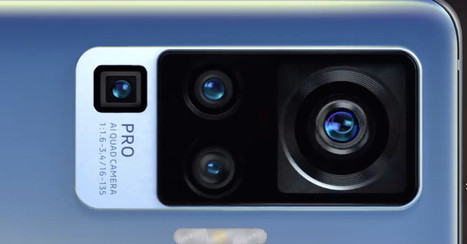



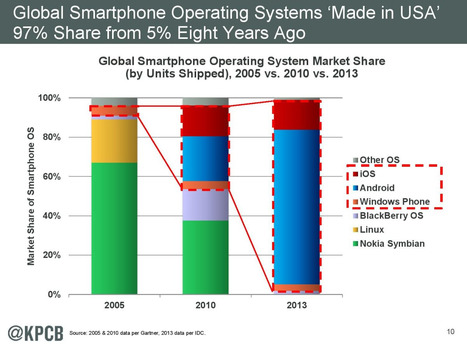
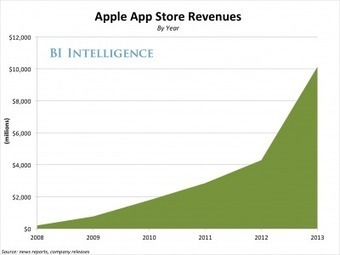
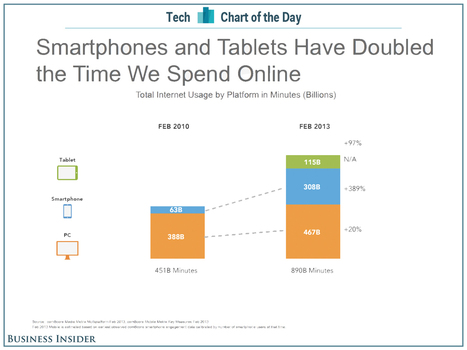
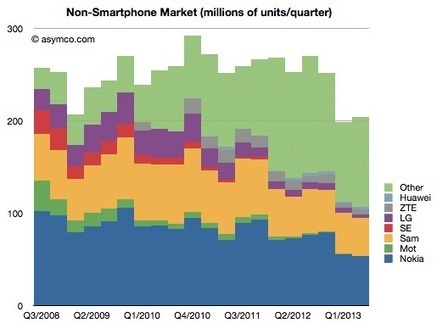
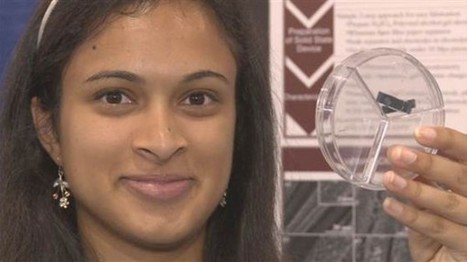

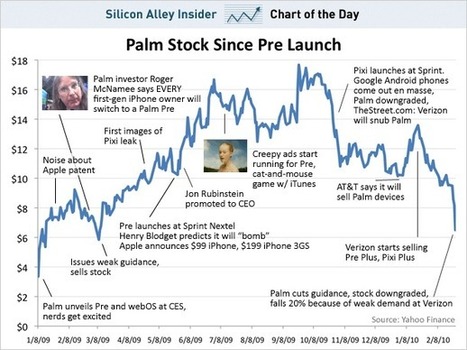

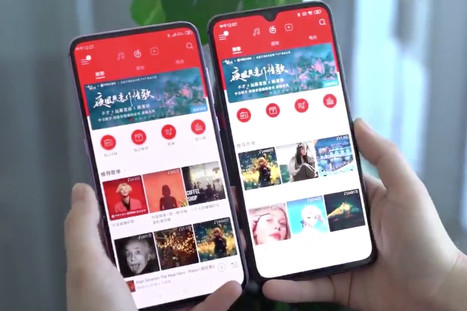

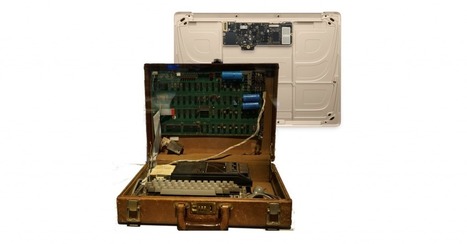

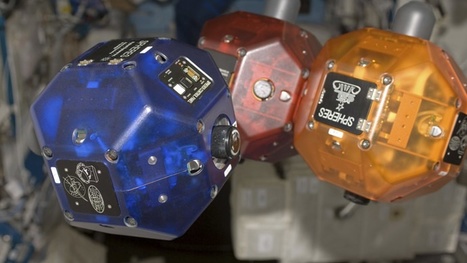
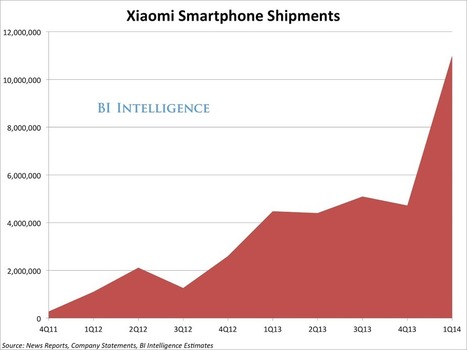
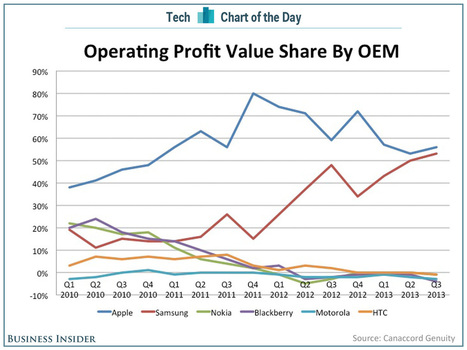
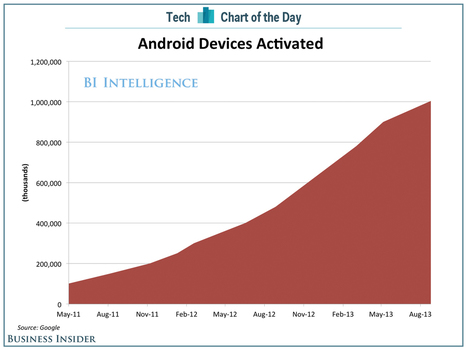

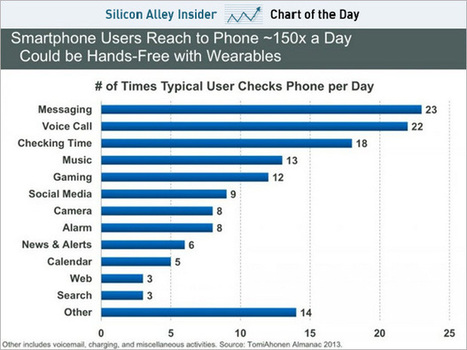
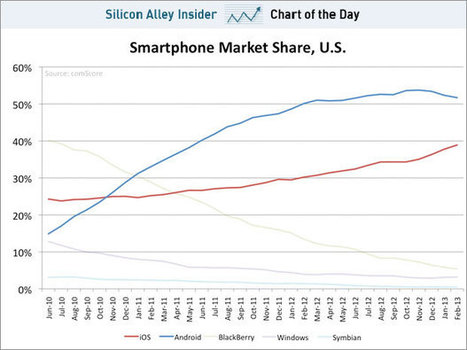
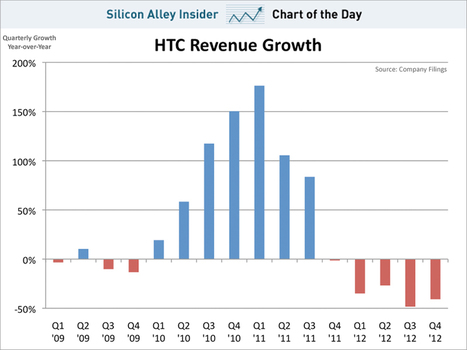
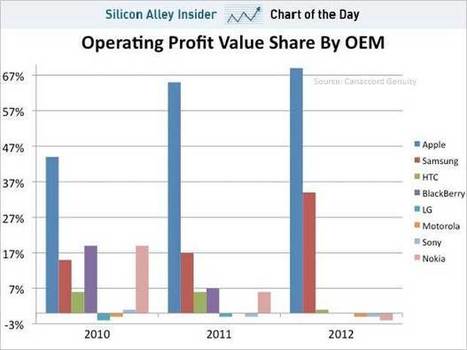
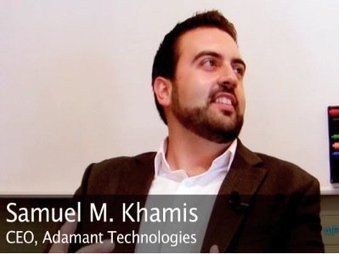
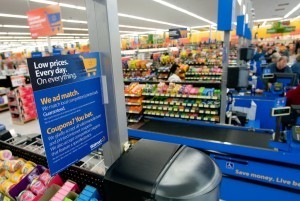





Trying to pack a 16-135 mm lens into a smartphone is a real challenge. Adding optical stabilization thanks to a robotic gimbal takes the challenge way further.